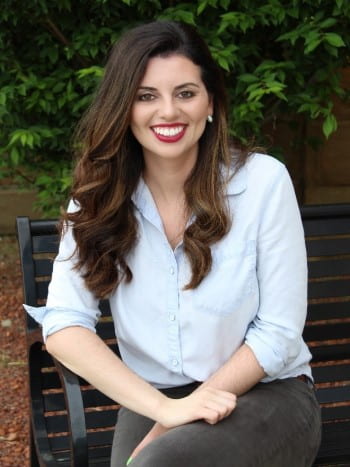PROTECT Trainee Jill Riddell completes KC Donnelly Externship at University of Arizona SRP in Tucson
Jill Riddell is a geology PhD Student at West Virginia University working on PROTECT Project 4, which focuses on tracing the passage of pollutants and other chemicals while it is transported through the Karst regions. Jill’s specific research, which is advised by Dr. Dorothy Vesper, focuses on evaluating polystyrene microspheres (small, hollow, sphere-shaped particles) as tracers in karst aquifers and answering a couple simple questions: 1.) Do microspheres adhere to mineral or sediment surfaces and how can researchers measure that? 2) Does the behavior observed in the laboratory also occur in field tracing experiments? When evaluating a tracer material, it is important to know as much as possible about the physical and chemical behavior of the tracer so that adequate mass transport estimations can be calculated. Over time and with consideration to this challenge, her research lead her to ask the question, “What specific chemical interactions or mechanisms allow microspheres to adsorb or adhere to karst mineral surfaces and sediments?”

Jill had the opportunity to explore this question and possibly find answers after receiving a KC Donnelly Externship to work with Dr. Jon Chorover at the University of Arizona SRP Center. She explains, “Dr. Chorover’s laboratory works to evaluate and characterize the chemical behavior of mine tailings and remediation in the Catalina Mountains Critical Zone Observatory. I chose to work in Dr. Chorover’s laboratory because of the opportunity to conduct quantitative laboratory experiments on sediment mineralogy and bonding through instrumentation that is available directly in the laboratory.”
To characterize and quantify the mineralogy of karst sediments, samples were evaluated using quantitative x-ray diffraction (XRD) via the Stanford Synchrotron Radiation Lightsource (SSRL) at Stanford University. The data collected were analyzed at University of Arizona using software and databases specific to this technique. Dry sediments were also evaluated using Fourier Transform infrared spectroscopy (FTIR) to search for specific mineral signals. Mixtures of sediment and microspheres were analyzed FTIR-ATR (attenuated total reflection) to observe how the microspheres change the signal of the sediments. Finally, sediment and microsphere mixtures were observed under a scanning electron microscope (SEM) in an effort to show the actual spheres (which are ~1um diameter) adhered to sediment surfaces. While the data still needs to be analyzed further in the future, this amount of data will allow Jill to determine possible mechanisms of microspheres adherence to karst sediments which affect PROTECT’s cohort.
“Working in the Chorover at U of A was an incredibly rewarding experience scientifically and for my own professional development. I was able to use instrumentation and learn techniques that would not have been as readily available to me at WVU, but more importantly I was able to have the guidance and input of experts in the field of soil and sediment mineralogy and chemical behavior. As a geologist and geochemist, being able to diversify my skillset and understanding of these subjects is invaluable in my research moving forward.”
Due to this experience Jill developed a more extensive network of scientific colleagues whom she will remain in contact with throughout the evaluation of the data and during her career beyond. Additionally, Jill would like to acknowledge Dr. Jon Chorover for his guidance and overall help in experimental development and data evaluation; Dr. Robert Root for his help in training for the instrumentation and software necessary to collect data and for evaluating the sediment samples at the SSRL; Dr. Yaniv Olshanksy for training on how to use the FTIR instrumentation; and Bryan Moravec for training her on how to use the quantitative XRD software.
“I would like to encourage current and future trainees to be aware of research outside their own specialty and how exploring opportunities in those fields can help with their own projects and development.” Applying for the KC Donnelly is an excellent way to pursue topics and or fields outside of your current focus and is sure to be a rewarding experience for anyone who is awarded the externship. We are proud of Jill for this achievement and look forward to reading the publications formed from this exciting externship experience.
Modified from original text by Jill Riddell
